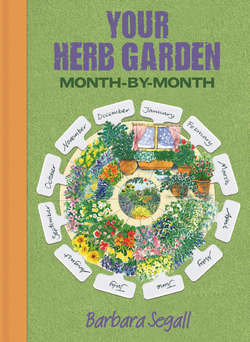Читать книгу Your Herb Garden - Barbara Segall - Страница 36
На сайте Литреса книга снята с продажи.
PREPARING AN EXISTING HERB BED
ОглавлениеIf your new herb garden site is part of an existing border or vegetable plot, the initial preparation is relatively easy.
Mark out the site carefully.
Next, the site will need weeding to remove long-term or perennial weeds such as dock, dandelion and thistle. They have long tap roots and also seed themselves freely each year. Other perennials such as bindweed, couch grass and creeping buttercup with underground stems or runners, are difficult to remove completely, as they regrow from small pieces of root.
Loosen individual dock, thistle and dandelion plants with a fork and work at them until you have removed as much as possible of their tap root. Similarly, loosen the soil and dig out weeds with creeping stems.
Fork over the soil and check that you have removed all visible pieces of their creeping root systems.
Seedlings of short-term annual weeds such as chickweed and hairy bittercress are easier to remove, but they must be tackled before they flower – which begins very early in spring – and self sow. Use a hoe to chop the leaves away from their roots. The leaves and stems can then be forked into the soil, where they will eventually decay and increase its fertility.
If the soil has been used regularly to grow vegetables or flowers, it will need enriching with well-rotted home-made or proprietary compost to replenish lost goodness. Dig this in, then fork the area over to break the newly-exposed soil down into a crumblier texture.
Once the site is weed free, you will be able to transplant herbs that are overcrowded or whose position you wish to alter.
